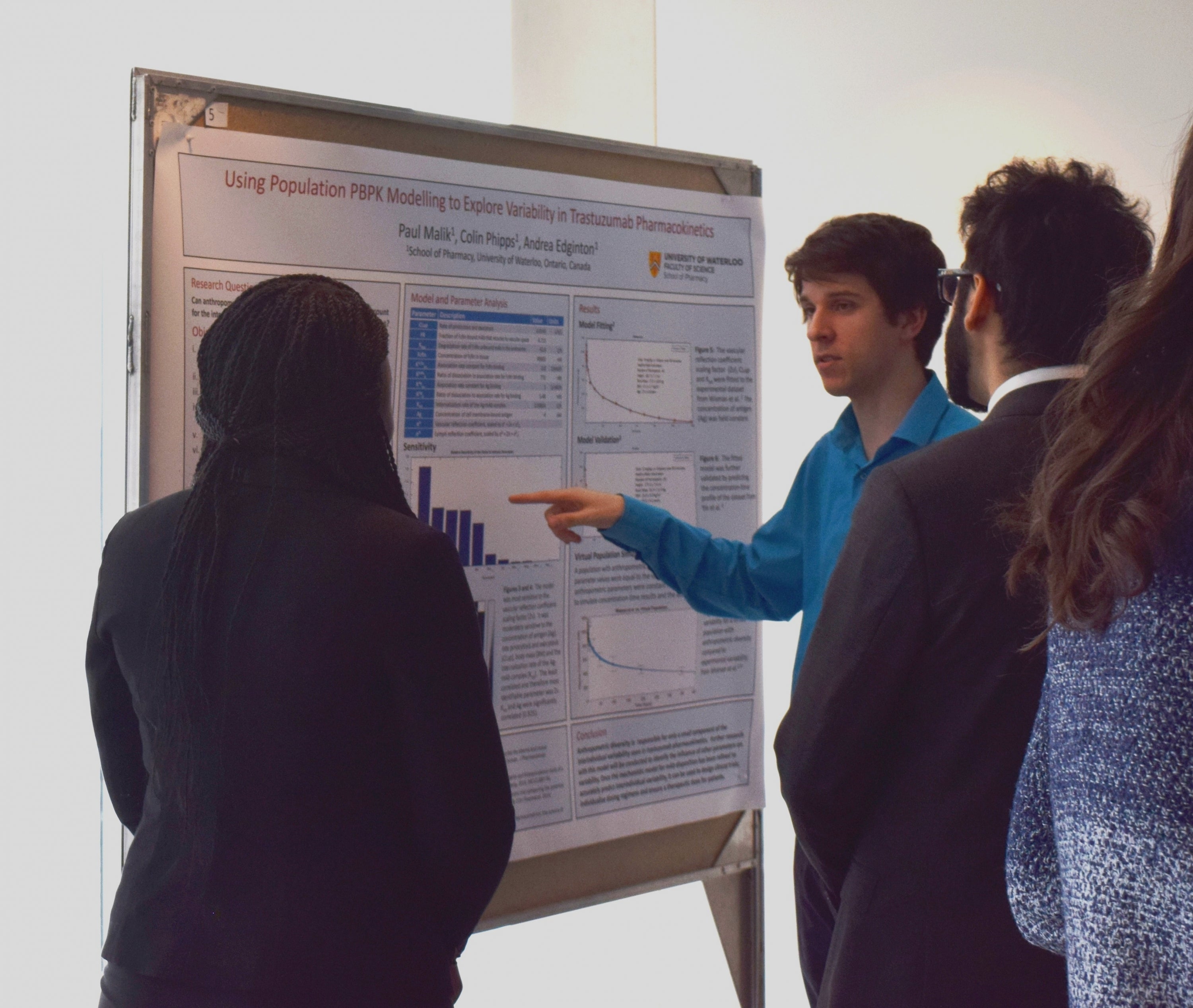Paul Malik, Rx 2016, won the 2016 Glaxo-Smith-Kline National Undergraduate Student Research Award. His poster, “Using Population PBPK Modelling to Explore Variability in Trastuzumab Pharmacokinetics”, conveyed focused and complex research, and Paul rendered that information in an accessible and engaging way for the audience.
The award-winning research
PBPK stands for physiologically-based pharmacokinetics, an area of study that explores how variables about the human body affect how drugs reach certain concentrations in that body.
Paul explains his work as “using math models to predict what happens to a drug while it is in the body. I am exploring the reasons why you might have a different concentration of trastuzumab in your blood than me after we both receive the same dose.”

A drug will behave differently in an overweight 50-year-old man and in a 25-year-old underweight woman. Paul’s work uses computers to build virtual populations and predict what those differences might be. By doing so, his research enables drug developers to establish better dosing recommendations. More accurate doses mean a more effective drug with less side-effects for patients.
Why does PBPK matter? Why does it matter for pharmacists?
PBPK computer modeling is especially important in determining appropriate drug doses when:
- A drug is being used in humans for the first time
- A drug is being used in children (to avoid risky clinical trials in children)
- A drug is part of a specific care plan in a complex patient (dosing changes can increase effectiveness and decrease medication costs)
An innovative field, PBPK is introduced to Waterloo Pharmacy students with a second year pharmacokinetics course taught by Dr. Andrea Edginton. Paul, who is now a member of Dr. Edginton’s lab, was initially interested in the mathematical roots of PBPK.
Math was always my best subject, biology was always my worst. When I heard that you could take biology and turn it into math, I was intrigued. I couldn’t stop my thoughts racing at night until I had devoured my fill of PBPK articles.
Paul’s co-op and rotation experience as a pharmacy student helped him see that pharmacokinetics can bridge a gap between research and practice. “There are problems in clinical pharmacy that can be solved with PBPK modelling,” he explains. Pharmacokinetics are also an important asset pharmacists bring to interprofessional teams.
Pharmacists are a resource for all other allied healthcare professionals regarding drug exposure, dosing, drug interactions and therapeutic drug monitoring. A pharmacist with a pharmacokinetic skill set cannot be replaced by a drug info book.
What’s next?
Paul graduates this year, and in September he’ll continue to explore pharmacokinetics as a Master’s student in Dr. Edginton’s lab. He plans to also practice as a pharmacist part-time, making the best of his diverse training. Thinking back four years ago to when he started pharmacy school, Paul never expected he’d be optimizing drug dosing by building virtual populations with math models.
It’s dangerous business going to pharmacy school, there’s no knowing where you might be swept off to.